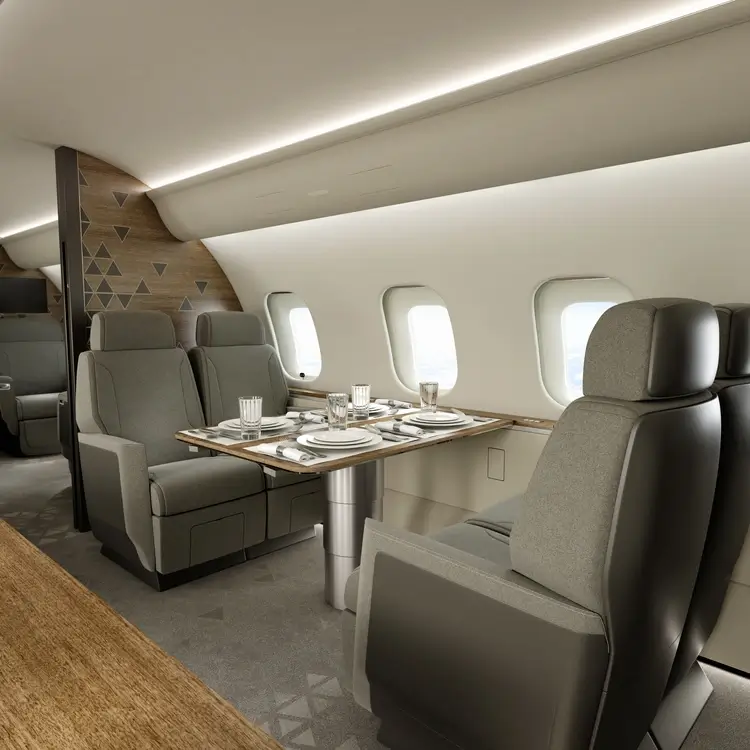How the One Big Beautiful Bill is Reshaping Private Aviation
Imagine touching down in Aspen just as the sun dips below the majesty of the Rockies, the engine’s hum settling into silence 7,820 feet above sea level. Now imagine that indulgent aircraft arriving on your 2025 balance sheet and getting written off entirely. That’s the elevated incentive now built into the tax code, thanks to the One Big Beautiful Bill (OBBB). Tucked into the recently passed piece of legislation is a provision that’s making waves in the private aviation world: the return of accelerated depreciation for jet purchases. Under the updated tax law, eligible buyers can now write off a substantial portion of an aircraft’s value, sometimes up to 100 percent, within the first year of ownership. This financial shift is already influencing how individuals and companies approach aircraft acquisition, ownership structures and long-term fleet strategy.
Private aviation has always been about more than just convenience, and for the wealthy, the new tax landscape isn’t just interesting—it’s actionable. Whether you’re eyeing your first aircraft, upgrading your fleet or advising high-net-worth clientele, understanding how this updated depreciation rule works could unlock serious tax advantages. It’s a prime moment to rethink how you fly. So, to better ascertain how the One Big Beautiful Bill is changing private jet ownership, we turned to specialists in both estate planning/tax law and the aviation industries. Here’s what they had to say about navigating this ever-evolving terrain.
Greg Raiff, CEO of Elevate Aviation Group, explains that the One Big Beautiful Bill essentially revives and extends a powerful tax incentive first introduced in the 2017 tax reform: 100 percent bonus depreciation on private aircraft purchases. “It’s not speculation; we know from experience with the 2017 law that this makes a real difference,” Raiff says. When that law was in effect, buyers could write off the entire purchase price of an aircraft, even if it was 100 percent financed. For many buyers, who often face marginal tax rates around 40-50 percent, this meant effectively getting back 50 cents on every dollar spent in tax savings the very year they put the plane into service. The results were clear: more jets sold, more people flying and a boost to aviation jobs and manufacturing. Raiff predicts similar effects with this most recent update.
One of the most immediate impacts is that owning a private jet has effectively become cheaper, thanks to the accelerated tax write-offs. “The cost of acquiring an airplane drops because you need less cash up front,” Raiff shares. “You can skip paying two quarters of taxes in the first year, improving cash flow significantly,” he says. Raiff calls this period “Christmas in July” for the industry, thanks to retroactive provisions in the One Big Beautiful Bill dating back to January 19, 2025. He also notes that to qualify for accelerated depreciation, aircraft must be in commercial operation and registered within strict timelines (roughly 90 days to purchase and 30 days to register). “Don’t be the last one trying to get in on this,” he warns, underscoring urgency as the end of the year approaches. “We’re celebrating 30 years in business and seeing a significant rise in registration activity. This confirms that the new tax incentives are driving real growth across the private aviation ecosystem,” Raiff states.
Of course, unlocking those tax advantages requires precise planning and execution. For that deeper dive, we turned to a legal expert to break down the fine print: Amanda Andrews, J.D., LL.M, breaks it down. She is Senior Counsel at Handler Law, LLP in Chicago, Illinois, the nation’s premier family office law firm catering to ultra-high net worth individuals. Andrews explains that the core provision of the bill is clear: “On July 4, 2025 the One Big Beautiful Bill has now made permanent a 100 percent first-year bonus depreciation under Internal Revenue Code (IRC) Section 168(k) for new or used private airplanes purchased and put into service after January 19, 2025 by certain businesses for business use,” she notes. In layperson’s luxury speak: your jet, when used for business, becomes a strategic asset, not just in the sky, but on the balance sheet. You can deduct the full cost in the first year, turbocharging your cash flow and freeing up capital for upgrades, destination adventures or even your next hangar.
This type of accelerated depreciation isn’t new, but its reinstatement, now with permanent status, has significant implications. “Bonus depreciation allows a business to immediately deduct a significant portion of the cost of an eligible asset in the year the asset is put into service, which can enhance cash flow and reduce taxable income,” she says. “In this case, with aircraft, the depreciation has been restored to 100 percent.” This differs from past law. “Under the previous Tax Cuts and Jobs Act of 2017 (TCJA), bonus depreciation under IRC Section 168(k) on this type of purchase was 100 percent initially but was slowly phased out beginning in 2023 and is scheduled to decrease by 20 percent every year to 0 percent in 2027,” the lawyer notes.
Luxury investment is as much about precision as it is about indulgence. To fly under the fiscal radar, or rather, through it, you must meet the IRS’s rules for qualified use. Eligibility isn’t automatic. Andrews emphasizes that the aircraft must be a business asset. This includes charter and commercial jets, airframes, engines and components, and it must meet the IRS’s business-use test. “The business must demonstrate that more than 50 percent of the use (miles or hours) is devoted to a qualified business use in the year placed into service,” she explains. “This means a use directly connected to the trade or business.” There is a two-step standard under IRC Section 280F to determine if the use is directly related to the trade or business. First, “At least 25 percent of the total hours must be unrelated party business use in order for related business use to count towards the 50 percent qualified business use,” the lawyer explains. Next, she says, “All combined business use must be more than 50 percent.” In more elegant terms: your jet needs to earn its stripes. At least half of its airborne hours must serve your business. (Think boardroom to yacht, not weekend escapades with the family.) In essence, this isn’t about leisure; it’s about purpose, and your ledger will thank you for getting it right.
For high-net-worth individuals or family offices, there is much to consider with the OBBB. Andrews notes that planning ahead is critical. She advises speaking to an attorney who has experience with aircraft and other business equipment purchases, as well as advanced tax planning experience, when the purchase is being considered. “Don’t wait until after the purchase,” she cautions. Additionally, be prepared for record-keeping and establishing an ownership structure for the aircraft, which will make all of this easier and safer for the family or family office.

“The cost of acquiring an airplane drops because you need less cash up front. You can skip paying two quarters of taxes in the first year, improving cash flow significantly.” -GREG RAIFF, THE CEO OF ELEVATE AVIATION GROUP
Together, Greg Raiff’s aviation insights and Amanda Andrews’ legal expertise paint a clear picture: the One Big Beautiful Bill is more than just a tax adjustment. It’s beginning to reshape how private jet ownership and operations are approached. From improved cash flow and ownership strategies to crucial compliance and planning considerations, savvy buyers and advisors now have a timely opportunity to rethink how they fly and invest. Act early, stay precise, and turn this tax tool into your next high-flying advantage.





